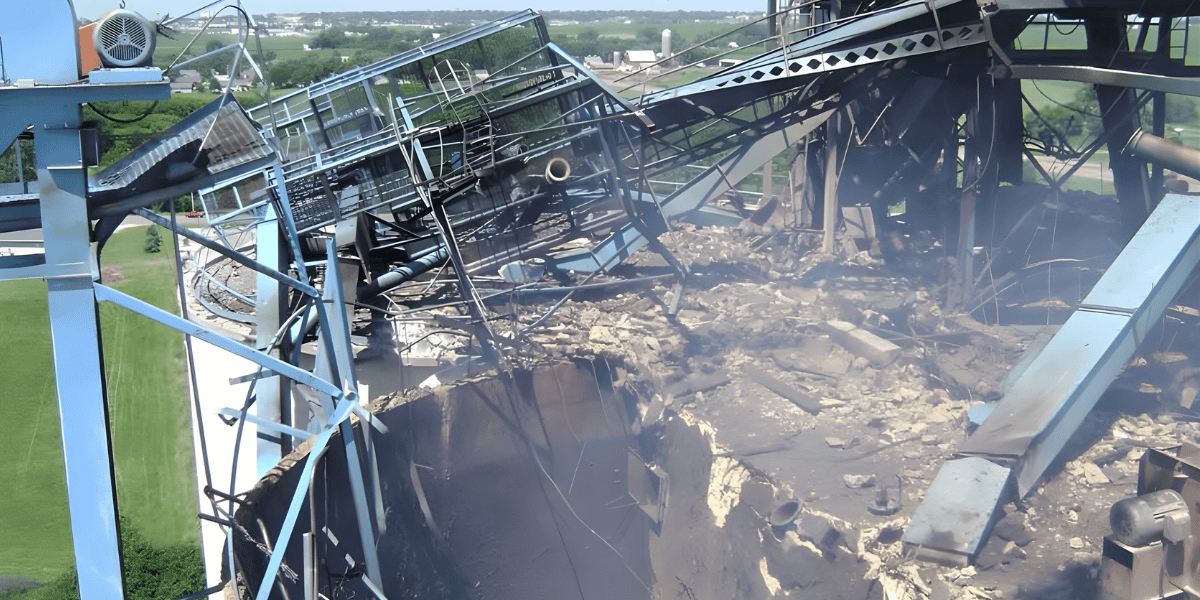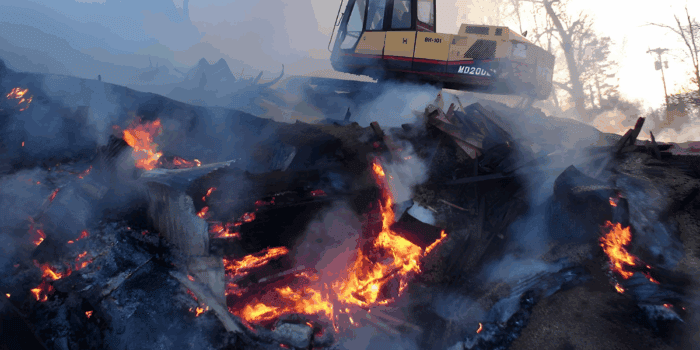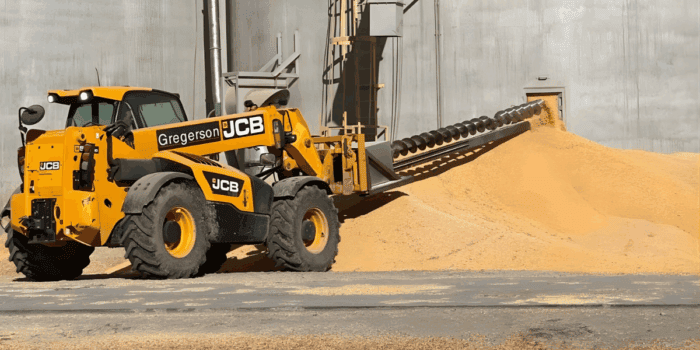
Common Grain Silo Emergencies Farmers Face
Managing grain is a part of everyday life on the farm, but the structures we rely on to store it come with real risks. Grain silos and bins can become dangerous fast, especially when grain goes out of condition or equipment isn’t used the right way. Most grain silo emergencies happen suddenly, and many are preventable with the right awareness and safety steps. We’re breaking down the most common grain silo emergencies, why they happen, and how to avoid them so you can keep your people, equipment, and operation safe.

1. Grain Entrapment and Engulfment
Grain entrapment happens when a person becomes stuck or pulled under by flowing or unstable grain inside a bin or silo. Once the grain begins to move, it acts like quicksand, pulling a person down in seconds. Entrapment is one of the most common and most dangerous emergencies in grain storage.
Why It Happens:
- Entering a bin while grain is flowing
- Walking on a crusted “grain bridge” that collapses
- Trying to break up hung or spoiled grain on bin walls
- Poor grain condition from moisture, heat, or fines
Why It’s Dangerous:
- A person can be pulled under in seconds
- The pressure of grain makes escape nearly impossible
- Oxygen can drop quickly in settled grain cavities
- Dust and mold exposure add respiratory risks
Read more about grain bin entrapment statistics in the United States.
Pro Tip: Never enter a grain bin while grain is flowing. Lock out all unloading equipment every single time.

2. Grain Dust Fires and Explosions
A grain dust fire or explosion occurs when fine particles of grain dust become suspended in the air and ignite. Dust is highly combustible, and even a small spark can trigger a fast-moving fire or explosion inside bins, legs, conveyors, or headhouses. These events often happen suddenly and spread quickly through connected equipment.
Why It Happens:
- Dust buildup inside bins, elevators, and conveyors
- Heat from bearings, motors, or friction
- Poor ventilation or air movement
- Ignition from electrical faults or static discharge
Why It’s Dangerous:
- Grain dust becomes explosive when suspended in air
- Explosions spread rapidly through connected equipment
- Fires can reignite if dust remains present
- Structural damage can disrupt an entire operation
Learn more about Grain Fires and Explosions.
Pro Tip: Keep dust cleaned up and eliminate ignition sources. Housekeeping is the strongest line of defense.

3. Structural Failures & Silo Collapse
A structural failure or collapse happens when the pressure inside a bin becomes too much for the structure to handle. This can occur from spoiled grain, uneven unloading, internal pressure points, or deteriorating silo walls. When a bin fails, thousands of bushels can be released instantly, causing major damage and serious safety risks.
Why It Happens:
- Spoiled grain creating pressure pockets
- Uneven unloading causing internal stress
- Bowed or aging sidewalls
- Excessive buildup of fines, crusting, or vertical columns
Why It’s Dangerous:
- Collapse can release thousands of bushels of grain instantly
- Workers nearby face crushing or engulfment risks
- Debris can damage equipment, utilities, and nearby buildings
- Grain loss is often total
For more information on why silos collapse, read our blog; Why Silos Collapse: Understanding Causes, Prevention and Safety.
Pro Tip: Perform annual structural inspections and address grain spoilage early, most collapses start with poor grain condition.

4. Falls & Confined-Space Hazards
Falls and confined-space hazards involve incidents where workers lose footing on ladders, roofs, or platforms, or enter a bin without safe air or proper precautions. Grain bins are tall, enclosed spaces with limited ventilation, making falls and air-quality issues two of the most common risks during inspection and maintenance work.
Why It Happens:
- Climbing ladders or roofs without fall protection
- Working near open hatches
- Entering a bin without testing the atmosphere
- Slippery or uneven surfaces on roofs or platforms
Why It’s Dangerous:
- Grain bins are tall and often exposed to wind
- A fall from even moderate height can be fatal
- Low-oxygen or toxic pockets may exist inside bins
- Confined spaces make rescue difficult and slow
Pro Tip: Use fall protection every time and test the atmosphere before entering any bin or confined space.

5. Equipment Entanglement
Equipment entanglement occurs when a worker comes into contact with moving machinery such as augers, sweep arms, conveyors, or PTO-driven equipment. These machines move quickly and with significant force, and even a momentary slip can lead to severe injury. Most entanglement events happen when equipment is running during entry or maintenance.
Why It Happens:
- Augers or sweep arms running during bin entry
- Missing or removed guards
- PTO-driven equipment without shields
- Attempting maintenance while equipment is energized
Why It’s Dangerous:
- Augers and sweepers cause severe, often irreversible injury
- Machinery reacts faster than a person can
- Entanglement often results in amputations or death
- Rescue is extremely difficult once entanglement occurs
Pro Tip: Shut down and lock out all equipment before anyone enters a grain bin, no exceptions.
Conclusion
Grain silo emergencies are fast, dangerous, and often deadly, but most are preventable. When operators understand how these emergencies happen and follow the right safety steps, risks are dramatically reduced.
West Side Salvage provides emergency response, grain salvage, silo cleanouts, structural assessments, and Emergency Action Plan assistance. Whether you run a small family farm or a large commercial operation, having experts in your corner protects both your people and your assets.